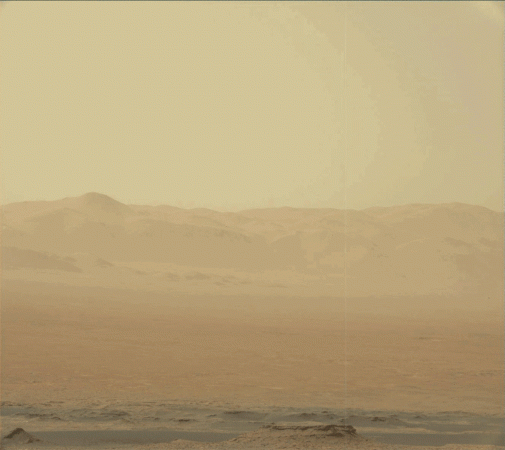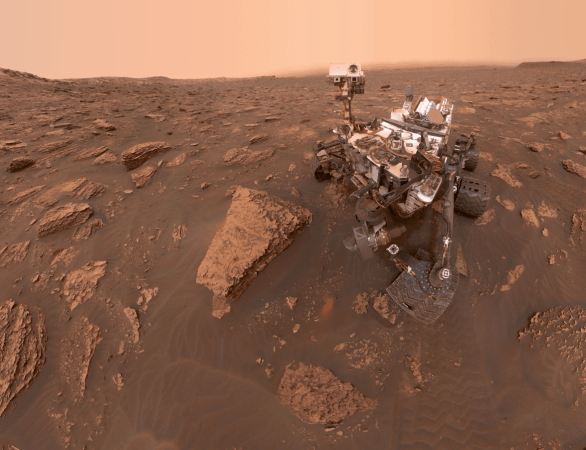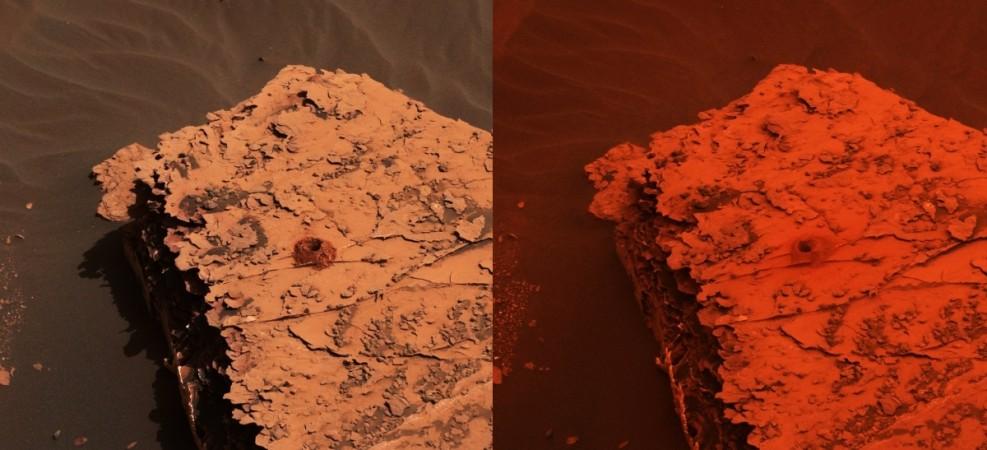
NASA's Opportunity rover is caught in a storm that could end its life on Mars. It has powered itself down and is conserving as much energy as it can, but if the air does not clear out in time, it could lose all heat within its systems and face "death".
After a certain temperature drop within its systems, the batteries could stop working, forcing it to face a fate similar to what happened with the Spirit rover that froze away in the Martian winter and declared dead in 2011.
The dust storm raging on Mars right now just got a lot bigger and lot more violent. In the last update, NASA said that the storm was about the size of continental USA with chances of getting bigger. It just got a lot bigger.
Since the storm is of epic proportions, NASA has categorised it as, "planet-encircling". The entire planet is now one big storm and the sky is dust. Mars rover Opportunity which was caught in the middle of the storm has gone offline because its solar powered systems are not getting any sunlight to keep it active. It has powered down for now, says NASA.
Images of the dust storm have been relayed back to Earth from Curiosity as well. Now that the storm has gone global, both rovers are affected by it. Having said that, the space agency reports that the dust storm is not likely to affect Curiosity too much.
Curiosity is literally on the other side of the red planet and is still seeing the haze in the sky as evidenced by the images NASA has just published.

Over the last week, the dust has steadily increased and has more than doubled since, there is little sunlight reaching the surface and this haze, called Tau, is now above 8.0 at Gale crater where Curiosity works. This is reportedly the highest Tau levels ever recorded since the start of its mission. Near Curiosity, Tau levels were last recorded at 11. Transmission is no longer coming through reliably enough, says NASA.

Why do some storms last for months on Mars?
No one really knows exactly why, said Scott D. Guzewich, an atmospheric scientist at NASA's Goddard Space Flight Center in Greenbelt, Maryland, leading Curiosity's dust storm investigation. Right now, there is a whole fleet of instruments and satellites studying the Martian storm up close, this includes Curiosity and Mars Orbiter, among others. This also happens to be the first time that NASA has had the chance to study a global dust storm up close.
The last storm of this magnitude happened in 2007, says NASA, 5 years before Curiosity got there.





!['Lip lock, pressure, pyaar': Vidya Balan- Pratik Gandhi shine in non-judgmental infidelity romcom Do Aur Do Pyaar [ Review]](https://data1.ibtimes.co.in/en/full/797104/lip-lock-pressure-pyaar-vidya-balan-pratik-gandhi-shine-non-judgmental-infidelity-romcom.jpg?w=220&h=138)







